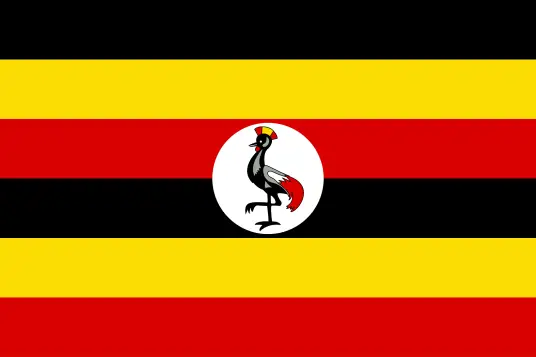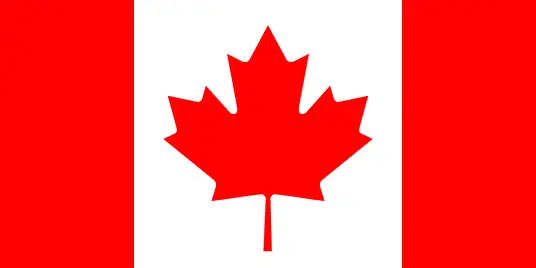
-
 Español
Español
-
 Portugues
Portugues
-
 Pусский
Pусский
-
 Français
Français
-
 Deutsch
Deutsch
-
 日本語
日本語
-
 한국어
한국어
-
 العربية
العربية
-
 Italiano
Italiano
-
 Nederlands
Nederlands
-
 Ελληνικά
Ελληνικά
-
 Svenska
Svenska
-
 Polski
Polski
-
 ไทย
ไทย
-
 Türk dili
Türk dili
-
 हिन्दी
हिन्दी
-
 Indonesia
Indonesia
-
 Melayu
Melayu
-
 Tiếng Việt
Tiếng Việt
-
 中文
中文
-
 dansk
dansk
-
 Magyar
Magyar
-
 қазақ
қазақ
-
 বাংলা
বাংলা
-
 עִברִית
עִברִית
-
 čeština
čeština
-
 Soomaali
Soomaali
-
 မြန်မာ
မြန်မာ
-
 فارسی
فارسی
-
 українська
українська
-
 norsk
norsk
-
 Gaeilge
Gaeilge
-
 беларускі
беларускі
-
 Română
Română
-
 ພາສາລາວ
ພາສາລາວ
-
 Filipino
Filipino
-
 lietuvių
lietuvių
-
 Cymraeg
Cymraeg
-
 македонски
македонски
-
 Suomalainen
Suomalainen
-
 slovenský
slovenský
-
 o'zbek
o'zbek
-
 اردو
اردو
-
 հայերեն
հայերեն
-
 Igbo
Igbo
-
 български
български
-
 سنڌي
سنڌي
-
 Shona
Shona
-
 සිංහල
සිංහල
-
 Hrvatski
Hrvatski
-
 íslenskur
íslenskur
-
 galego
galego
-
 català
català
-
 Zulu South Africa
Zulu South Africa
-
 Afrikaans isiXhosa
Afrikaans isiXhosa
-
 ಕನ್ನಡ
ಕನ್ನಡ
-
 lëtzebuergesch
lëtzebuergesch
-
 Indonésia Sunda
Indonésia Sunda
-
 basa jawa
basa jawa
-
 ગુજરાતી
ગુજરાતી
-
 Кыргызча
Кыргызча
-
 тоҷикӣ
тоҷикӣ
-
 Србија
Србија
-
 Twi
Twi
-
 Hawaii
Hawaii
-
 Cebu
Cebu
-
 नेपाल
नेपाल
-
 euskara
euskara
-
 Kurdî
Kurdî
-
 frissi
frissi
-
 יידיש
יידיש
-
 latvija
latvija
-
 slovenija
slovenija
-
 kiswahili
kiswahili
-
 ਪੰਜਾਬ
ਪੰਜਾਬ
-
 پښتو
پښتو
-
 საქართველოს
საქართველოს
-
 hua moni
hua moni
-
 bosna
bosna
-
 తెలుగు
తెలుగు
-
 தமிழ்
தமிழ்
-
 Kreyòl ayisyen
Kreyòl ayisyen
-
 Eesti
Eesti
-
 Corsica
Corsica
-
 Yoruba
Yoruba
-
 Gàidhlig na h-Alba
Gàidhlig na h-Alba
-
 Samoa
Samoa
-
 Монгол
Монгол
-
 Hausa
Hausa
-
 Azərbaycan
Azərbaycan
-
 አማራ
አማራ
-
 Shqipëria
Shqipëria
-
 Malagasy
Malagasy
-
 मराठी
मराठी
-
 മലയാളം
മലയാളം
-
 Malta
Malta
-
 ខ្មែរ
ខ្មែរ
-
 Chicheva
Chicheva
-
 中文(繁体)
中文(繁体)
-
 ଓଡିଆ
ଓଡିଆ
-
 Setswana
Setswana
-
 Afrikaans
Afrikaans
-
 Aymara
Aymara
-
 Башҡорт
Башҡорт
-
 Türkmenler
Türkmenler
-
 ትግሪኛ
ትግሪኛ
-
 Afaan Oromoo
Afaan Oromoo
-
 অসমীয়া
অসমীয়া
-
 Kinyarwanda
Kinyarwanda
-
 Ilocano
Ilocano
-
 Wolof
Wolof
-
 अवधी
अवधी
-
 Oluganda
Oluganda
-
 Bikol
Bikol
-
 Fulɓe
Fulɓe
-
 Kikongo
Kikongo
-
 Sango
Sango
-
 ދިވެހި
ދިވެހި
-
 Lingala
Lingala
-
 मैथिली
मैथिली
-
 Tsonga
Tsonga
-
 ꯃꯦꯏ ꯊꯥꯏ꯫
ꯃꯦꯏ ꯊꯥꯏ꯫
-
 brezhoneg
brezhoneg
-
 Furlan
Furlan
-
 नेवा
नेवा
-
 རྫོང་ཁ
རྫོང་ཁ
-
 Santali
Santali
-
 Аҧсуа
Аҧсуа
-
 Нохчийн
Нохчийн
-
 Чӑваш
Чӑваш
-
 Татар
Татар
-
 Batak Karo
Batak Karo
-
 دری
دری
-
 Diura
Diura
-
 Fengyu
Fengyu
-
 Eʋegbe
Eʋegbe
-
 Iban
Iban
-
 Fiji
Fiji
-
 Tonga
Tonga
-
 Inuktitut
Inuktitut
-
 Nahuatl
Nahuatl
-
 maaya yucatec
maaya yucatec
-
 Runasimi
Runasimi
-
 guarani
guarani
-
 Qafar
Qafar
-
 Acholi
Acholi
-
 Dinka
Dinka
-
 Luo
Luo
-
 Lundi
Lundi
-
 isiNdebele
isiNdebele
-
 Tshivenḓa
Tshivenḓa
-
 Sesotho sa Leboa
Sesotho sa Leboa
-
 Sesotho sa Borwa
Sesotho sa Borwa
-
 Ndumbe
Ndumbe
-
 Papuan Pidgin
Papuan Pidgin
-
 Rromani ćhib
Rromani ćhib
-
 Thok Nath
Thok Nath
yuxiatugong@163.com
+86 18353494641
-
 Español
Español
-
 Portugues
Portugues
-
 Pусский
Pусский
-
 Français
Français
-
 Deutsch
Deutsch
-
 日本語
日本語
-
 한국어
한국어
-
 العربية
العربية
-
 Italiano
Italiano
-
 Nederlands
Nederlands
-
 Ελληνικά
Ελληνικά
-
 Svenska
Svenska
-
 Polski
Polski
-
 ไทย
ไทย
-
 Türk dili
Türk dili
-
 हिन्दी
हिन्दी
-
 Indonesia
Indonesia
-
 Melayu
Melayu
-
 Tiếng Việt
Tiếng Việt
-
 中文
中文
-
 dansk
dansk
-
 Magyar
Magyar
-
 қазақ
қазақ
-
 বাংলা
বাংলা
-
 עִברִית
עִברִית
-
 čeština
čeština
-
 Soomaali
Soomaali
-
 မြန်မာ
မြန်မာ
-
 فارسی
فارسی
-
 українська
українська
-
 norsk
norsk
-
 Gaeilge
Gaeilge
-
 беларускі
беларускі
-
 Română
Română
-
 ພາສາລາວ
ພາສາລາວ
-
 Filipino
Filipino
-
 lietuvių
lietuvių
-
 Cymraeg
Cymraeg
-
 македонски
македонски
-
 Suomalainen
Suomalainen
-
 slovenský
slovenský
-
 o'zbek
o'zbek
-
 اردو
اردو
-
 հայերեն
հայերեն
-
 Igbo
Igbo
-
 български
български
-
 سنڌي
سنڌي
-
 Shona
Shona
-
 සිංහල
සිංහල
-
 Hrvatski
Hrvatski
-
 íslenskur
íslenskur
-
 galego
galego
-
 català
català
-
 Zulu South Africa
Zulu South Africa
-
 Afrikaans isiXhosa
Afrikaans isiXhosa
-
 ಕನ್ನಡ
ಕನ್ನಡ
-
 lëtzebuergesch
lëtzebuergesch
-
 Indonésia Sunda
Indonésia Sunda
-
 basa jawa
basa jawa
-
 ગુજરાતી
ગુજરાતી
-
 Кыргызча
Кыргызча
-
 тоҷикӣ
тоҷикӣ
-
 Србија
Србија
-
 Twi
Twi
-
 Hawaii
Hawaii
-
 Cebu
Cebu
-
 नेपाल
नेपाल
-
 euskara
euskara
-
 Kurdî
Kurdî
-
 frissi
frissi
-
 יידיש
יידיש
-
 latvija
latvija
-
 slovenija
slovenija
-
 kiswahili
kiswahili
-
 ਪੰਜਾਬ
ਪੰਜਾਬ
-
 پښتو
پښتو
-
 საქართველოს
საქართველოს
-
 hua moni
hua moni
-
 bosna
bosna
-
 తెలుగు
తెలుగు
-
 தமிழ்
தமிழ்
-
 Kreyòl ayisyen
Kreyòl ayisyen
-
 Eesti
Eesti
-
 Corsica
Corsica
-
 Yoruba
Yoruba
-
 Gàidhlig na h-Alba
Gàidhlig na h-Alba
-
 Samoa
Samoa
-
 Монгол
Монгол
-
 Hausa
Hausa
-
 Azərbaycan
Azərbaycan
-
 አማራ
አማራ
-
 Shqipëria
Shqipëria
-
 Malagasy
Malagasy
-
 मराठी
मराठी
-
 മലയാളം
മലയാളം
-
 Malta
Malta
-
 ខ្មែរ
ខ្មែរ
-
 Chicheva
Chicheva
-
 中文(繁体)
中文(繁体)
-
 ଓଡିଆ
ଓଡିଆ
-
 Setswana
Setswana
-
 Afrikaans
Afrikaans
-
 Aymara
Aymara
-
 Башҡорт
Башҡорт
-
 Türkmenler
Türkmenler
-
 ትግሪኛ
ትግሪኛ
-
 Afaan Oromoo
Afaan Oromoo
-
 অসমীয়া
অসমীয়া
-
 Kinyarwanda
Kinyarwanda
-
 Ilocano
Ilocano
-
 Wolof
Wolof
-
 अवधी
अवधी
-
 Oluganda
Oluganda
-
 Bikol
Bikol
-
 Fulɓe
Fulɓe
-
 Kikongo
Kikongo
-
 Sango
Sango
-
 ދިވެހި
ދިވެހި
-
 Lingala
Lingala
-
 मैथिली
मैथिली
-
 Tsonga
Tsonga
-
 ꯃꯦꯏ ꯊꯥꯏ꯫
ꯃꯦꯏ ꯊꯥꯏ꯫
-
 brezhoneg
brezhoneg
-
 Furlan
Furlan
-
 नेवा
नेवा
-
 རྫོང་ཁ
རྫོང་ཁ
-
 Santali
Santali
-
 Аҧсуа
Аҧсуа
-
 Нохчийн
Нохчийн
-
 Чӑваш
Чӑваш
-
 Татар
Татар
-
 Batak Karo
Batak Karo
-
 دری
دری
-
 Diura
Diura
-
 Fengyu
Fengyu
-
 Eʋegbe
Eʋegbe
-
 Iban
Iban
-
 Fiji
Fiji
-
 Tonga
Tonga
-
 Inuktitut
Inuktitut
-
 Nahuatl
Nahuatl
-
 maaya yucatec
maaya yucatec
-
 Runasimi
Runasimi
-
 guarani
guarani
-
 Qafar
Qafar
-
 Acholi
Acholi
-
 Dinka
Dinka
-
 Luo
Luo
-
 Lundi
Lundi
-
 isiNdebele
isiNdebele
-
 Tshivenḓa
Tshivenḓa
-
 Sesotho sa Leboa
Sesotho sa Leboa
-
 Sesotho sa Borwa
Sesotho sa Borwa
-
 Ndumbe
Ndumbe
-
 Papuan Pidgin
Papuan Pidgin
-
 Rromani ćhib
Rromani ćhib
-
 Thok Nath
Thok Nath

News Center
News Center
HOT PRODUCT
Prefabricated Vertical Drains Speed Up Ground Consolidation in Port Projects
2025-11-22 08:26:59

Prefabricated Vertical Drains Speed Up Ground Consolidation in Port Projects
Introduction
Port construction projects often face significant geotechnical challenges due to the presence of soft, compressible soils such as clay, silt, and organic deposits. These soils have low shear strength and high compressibility, leading to prolonged consolidation periods under structural loads. Traditional ground improvement techniques, such as surcharging and deep dynamic compaction, may not always provide the required consolidation rates for large-scale port developments.
Prefabricated Vertical Drains (PVDs), also known as wick drains, have emerged as an effective solution to accelerate soil consolidation by shortening drainage paths and facilitating faster dissipation of excess pore water pressure. This paper explores the role of PVDs in port projects, their design principles, installation methods, and benefits over conventional techniques.
The Need for Accelerated Consolidation in Port Projects
Port infrastructure, including quay walls, container yards, and breakwaters, imposes substantial loads on underlying soils. Soft marine clays, commonly found in coastal regions, exhibit slow consolidation due to their low permeability. Without proper ground improvement, excessive settlement can occur over decades, leading to operational disruptions and structural damage.
The primary objectives of ground improvement in port projects include:
1. Reducing Settlement Time – Accelerating consolidation to meet project schedules.
2. Enhancing Bearing Capacity – Improving soil strength to support heavy loads.
3. Minimizing Differential Settlement – Ensuring uniform load distribution to prevent structural failure.
PVDs address these challenges by providing a controlled and efficient drainage system that significantly reduces consolidation time compared to natural drainage methods.
Principles of Prefabricated Vertical Drains
PVDs consist of a synthetic core (typically made of polyethylene or polypropylene) wrapped in a geotextile filter fabric. The core provides structural support and creates vertical flow channels, while the geotextile prevents soil intrusion while allowing water to pass through.
Mechanism of PVDs in Consolidation
The consolidation process in soft soils follows Terzaghi’s theory, where excess pore water pressure dissipates as water flows out of the soil matrix. The time required for consolidation depends on the drainage path length, which is reduced significantly by PVDs.
Key principles include:
- Shortened Drainage Path – PVDs create vertical drainage channels, reducing the distance water must travel to escape.
- Radial Consolidation – Unlike traditional vertical drainage, PVDs promote radial flow, significantly speeding up pore pressure dissipation.
- Combination with Surcharging – Preloading with embankments or vacuum-assisted techniques further enhances consolidation efficiency.
Design Considerations for PVDs in Port Projects
Soil Investigation and Characterization
Before PVD installation, a detailed geotechnical investigation is essential to determine:
- Soil stratification (thickness and properties of compressible layers).
- Coefficient of consolidation (Cv) and permeability (k).
- Expected load distribution from port structures.
Spacing and Depth of PVDs
The effectiveness of PVDs depends on their spacing and penetration depth:
- Spacing – Typically ranges from 0.5 to 3 meters, depending on soil properties and required consolidation time. Closer spacing accelerates consolidation but increases costs.
- Depth – PVDs must penetrate through compressible layers to reach a firm stratum (e.g., sand or dense clay) to ensure effective drainage.
Surcharge Design
PVDs are often combined with surcharge loads (temporary embankments or vacuum pressure) to increase consolidation rates. The surcharge magnitude and duration depend on:
- Required degree of consolidation (e.g., 90% consolidation may be needed before construction).
- Soil compressibility and creep behavior.
Installation Techniques
PVD installation involves specialized equipment and procedures:
Equipment Used
- Mounted Drain Installers – Track-mounted rigs with mandrels to insert PVDs to the required depth.
- Static or Vibratory Hammers – Used to drive mandrels into the ground.
- Surveying Tools – Ensure accurate spacing and alignment.
Installation Steps
1. Site Preparation – Clearing and leveling the ground to facilitate equipment movement.
2. Positioning PVDs – Following a predetermined grid pattern based on design spacing.
3. Mandrel Insertion – The mandrel penetrates the soil, carrying the PVD to the target depth.
4. Mandrel Extraction – The mandrel is withdrawn, leaving the PVD in place.
5. Cutting and Sealing – Excess drain material is trimmed, and the top is sealed to prevent clogging.
Quality Control Measures
- Depth Verification – Ensuring PVDs reach the intended depth.
- Integrity Checks – Confirming no damage to the geotextile filter.
- Spacing Accuracy – Avoiding deviations from the design layout.
Advantages of PVDs in Port Construction
Faster Consolidation Compared to Conventional Methods
PVDs reduce consolidation time from years to months, enabling faster project completion.
Cost-Effectiveness
- Lower material costs compared to stone columns or deep soil mixing.
- Reduced surcharge duration minimizes temporary load requirements.
Minimal Environmental Impact
- No chemical additives or soil excavation required.
- Less disruption to marine ecosystems compared to dredging or deep compaction.
Adaptability to Various Soil Conditions
PVDs are effective in soft clays, silts, and organic soils, making them versatile for different port environments.
Case Studies and Performance Evaluation
Case Study 1: Large-Scale Container Terminal
A port expansion project in Southeast Asia utilized PVDs with vacuum preloading to consolidate 20 meters of soft clay. The results showed:
- 90% consolidation achieved in 12 months (compared to 10+ years naturally).
- Settlement reduction of over 2 meters, ensuring stable ground for heavy container stacks.
Case Study 2: Quay Wall Construction in Europe
PVDs were installed behind a quay wall to mitigate lateral soil movement and differential settlement. Monitoring data indicated:
- Uniform settlement across the berth structure.
- No significant post-construction settlement observed after 2 years.
Challenges and Limitations
Clogging and Filter Compatibility
- Fine-grained soils may clog the geotextile filter, reducing efficiency. Proper filter selection is critical.
Installation in Very Soft Soils
- Extremely soft soils may require additional stabilization before PVD installation to prevent mandrel deflection.
Long-Term Performance
- Creep settlement in highly organic soils may still occur after primary consolidation.
Future Trends and Innovations
Smart PVDs with Sensors
Embedded sensors can monitor pore pressure and settlement in real-time, optimizing surcharge removal timing.
Sustainable Materials
Research into biodegradable geotextiles and recycled polymer cores aims to reduce environmental impact.
Hybrid Ground Improvement Techniques
Combining PVDs with deep soil mixing or electro-osmosis for challenging soil conditions.
Conclusion
Prefabricated Vertical Drains offer a highly effective solution for accelerating ground consolidation in port projects. By reducing drainage paths and enabling faster pore pressure dissipation, PVDs help meet tight construction schedules while improving soil stability. Proper design, installation, and quality control are essential for maximizing their benefits. As port infrastructure demands grow, advancements in PVD technology will continue to enhance their efficiency and sustainability, making them indispensable in modern geotechnical engineering.
Key Takeaways
- PVDs significantly reduce consolidation time in soft soils.
- They are cost-effective, environmentally friendly, and adaptable to various conditions.
- Future innovations will focus on smart monitoring and sustainable materials.
By integrating PVDs into port development projects, engineers can achieve stable, long-lasting foundations while minimizing delays and costs associated with slow natural consolidation.








 Phone
Phone
Comment
(0)